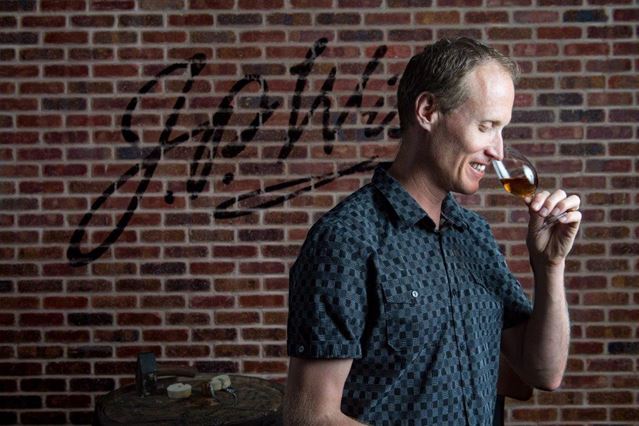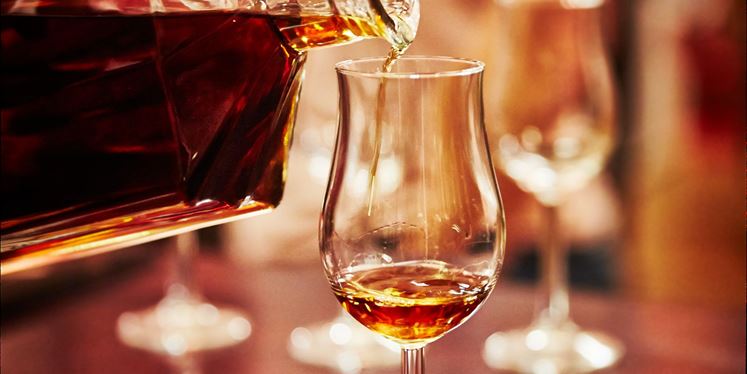
Although Canada didn’t invent whisky, Canada certainly played a pivotal role in defining the rules for age declarations that we see in the whisky category today. Canada was the first country in the world to mandate a minimum age requirement in 1890. Twenty-five years ahead of Scotch and Irish whiskey. This is the reason why Canadian whisky was the largest producer of whisky globally by the year 1900. We still see the affects of age declarations as a key quality attribute to the whisky category today.
Distilling whisky in Canada started in 1769. In fact, we were not officially a country until 1867. Canadians would have drunk rum due to the influence of the British navy and early settlements in the Caribbean islands. Today we still see rum as a popular drink on the east coast of Canada. However, as Canadians started to move to the interior, they used the resources at hand (grain) to make their spirits. By the early 1800s, there were over two hundred “registered” distillers making spirits that were likely pot distilled, unaged, made from leftover grain, and fermented under unsanitary conditions. Not ideal. Whisky would have been essentially moonshine.
A number of key whisky barons transformed the taste of Canadian whisky. One of them – the Gooderham & Worts milling company – started a distillery to diversify their operations. At first, they pot distilled whisky, but in 1846 they developed a patent which started to distil spirits continuously through two column stills. We know this as the rectification still today, but what they did was turned the harsh moonshine spirit from being heavy and unpalatable into a spirit that was lighter and smoother, which was preferred by their customers. Other distillers such as Hiram Walker, Henry Corby, and JP Wiser adapted to this type of distillation. This is the main reason today we see most Canadian whisky tends to be lighter and smoother in comparison to other whisky styles. This light whisky flavour profile with a hint of rye is what we call traditional Canadian whisky. In forty years, Canada went from two hundred and fifty distillers to nineteen. It was those distilleries that adapted and started column distilling twice to make the light smooth whisky to blend with a heavier rye whisky that remained in business. The artful skill of blending for Canadian whisky was born.
When I conduct all my whisky tastings I usually start with the question, “What event in history do you believe grew the Canadian whisky category more than any other event?” Ninety-nine percent of the time the audience will respond “prohibition.” We are influenced by popular TV shows and become captivated by the storytelling around smuggling and gangsters, but, prohibition drastically caused Canadian whisky to decline in sales. The most influential event for Canadian whisky was 1861 – 1865, the US civil war. The war caused the US distilleries to close as the men went to fight in the war. The metal from the distillation units would have been melted down used for ammunition. In all likelihood, the distilleries from the north and the distilleries from the south would not have sold the product to one another. Excessive drinking was an issue, so war camps instated prohibition inside of those camps. Taxation on a gallon of whisky in 1861 was twenty cents and by 1865 it was a dollar fifty. The scenario was ideal for Canadian distillers to become rather opportunistic. Suddenly to JP Wiser, Henry Corby, Hiram Walker and Gooderham & Worts the distilling business became their primary focus.
Canadian distillers were innovative and creative individuals and adapted to the circumstances that were handed to them. For instance, whisky was not always aged. It wasn’t always sold in a glass bottle. Consumers would have owned their barrels and showed up to the distillery with a barrel and would have been filled up and taken home. Whisky would have been aged for a matter of weeks. One of the problems distillers faced was cross-contamination from previously filled items – fur, fish, tea leaves, tobacco, or even meat. That’s where Canadian distillers copied other distilleries and burned the inside of a barrel to remove any off odours. They learned that this added good quality flavours such as vanilla, caramel, and toffee notes.
We also had to adapt to government regulations. Canadians did not have to pay an income tax until 1917. The nation was fifty years old before the general population had to pay a tax, however, the government still had to generate money to operate. The five largest taxpayers in Canada at that time were the distillers – Gooderham & Worts, Hiram Walker, JP Wiser, Henry Corby, and Joseph Seagram. So, at one point in history, over a twenty-four hour shift, there were sixty Excise officers hired to oversee operations at the Hiram Walker Distillery to watch their tax dollars hard at work. Further to that, the Canadian government introduced a National Policy in 1890 of ageing whisky for two years in bond, the first whisky category in the world to mandate a minimum ageing requirement. The idea was to protect the manufacturing of whisky in Canada and called for high tariffs on imported whisky, but not realizing it added significant costs to the distillery. Hiram Walker was interviewed in 1895 and mentioned he would have never started a distillery knowing he had to age alcohol. JP Wiser’s inventory increased by twenty times over two years. Suddenly, the capital required to start a distillery was very large – I think some new distilleries today would still agree. Again, distillers had to adapt to the National Policy by developing clever marketing and sales programs. Canadian whisky advertisements in the late 1890s would intentionally mention that they were aged in bond, mellowed, and smoothed in white oak barrels under the ‘supervision’ of the Canadian government. By the year 1900, Canadian whisky was the largest selling whisky in the world. The largest distillery in the world was the Gooderham & Worts distillery in Toronto making two million gallons of whisky annually. Canada was built on whisky.
A few short words on prohibition: we essentially lost our distribution and customer. Like any business, when that happens it is not good. A few people controlled distribution, such as Sam Bronfman and Harry Hatch, but in reality, prohibition caused distilleries to sit on inventories and forced consolidation.
In recent years Canadian whisky has awoken from its shell and we have started to see our landscape change. We are adapting again and leveraging the tools the original whisky barons handed down to us. We are starting to see demand for cask strength whiskies like JP Wiser’s 23 Year, whisky finished in different barrels like Pike Creek 10 Year Rum Cask Finish, and 100% rye whisky such as Lot 40. Rye, in particular, is a burgeoning whisky style with a renewed interest globally. Canadian terrain is well suited to grow rye. At Hiram Walker, we source our rye from local farmers who have been supplying our distillery for generations. In this past year, we have fermented and distilled more rye in Hiram Walker’s 160-year history to meet the demand for Lot 40.
But in the end as Canadians, we view Canadian whisky to be the most innovative and adaptable style of whisky in the world. All we must be is made of grain. Fermented, distilled, and aged in Canada. Aged in a wooden barrel of less than 700 litres for a minimum of three years and be more than 40% abv. We are not told we must use a mash bill of various percentages. We are not told how to distil. And we are not told what barrel types we can use. The choice is ours. That allows us to be creative. That makes Canadian whisky diverse. Isn’t that Canada?

